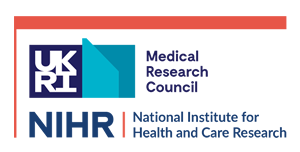This is a brief of broad scope from which the MRC-NIHR Efficacy and Mechanism Evaluation (EME) Programme is interested in potentially funding more than one proposal.
Overview
The EME Programme is interested in proposals for the evaluation of interventions to improve the treatment, management and support given to people following a stroke, which address, or partly address, one or more of the:
- Outputs from the NHS England’s Demand signalling in the area of Rehabilitation and life after stroke.
- Priorities from the James Lind Alliance Priority Setting Partnership in Stroke rehabilitation and long-term care.
Rationale
There are around 1.3 million stroke survivors living in the UK, and this number is set to increase in the coming years as the population ages and survival rates improve. Stroke can result in a wide range of physical, emotional and cognitive effects. It is estimated that approximately one third of long-term stroke survivors in England have a moderate or severe disability and one-third a mild disability. As well as the significant impacts on the people who have a stroke and their families, there can be considerable health and social care costs. The current UK annual societal cost of stroke is estimated to be £25.6 billion.
The NHS Long Term Plan identifies stroke as a clinical priority and outlines targets for stroke care in England. NHS England (NHSE) recently published the outputs of a demand signalling process, which identified and prioritised research questions that need answering to support the achievement of these targets, including in the area of rehabilitation and care following stroke. The outputs closely align with a 2021 James Lind Alliance Priority Setting Partnership (JLA PSP) led by the Stroke Association that also looked at rehabilitation and long-term care. Together the demand signalling process and JLA PSP give a clear direction for research in the area.
The EME Programme is interested in commissioning research that supports addressing the research priorities identified by these two processes. Applicants should explain how their proposed research fits within the remit of the EME Programme and within the broader context of published and ongoing studies, as well as which demand signalling output(s) or JLA PSP priority(s) it addresses, or partly addresses.
The Health Technology Assessment (HTA) Programme also has an interest in this area. Applicants wishing to submit studies focussed on evaluating interventions which already have some evidence to show that they can be effective, should refer to the parallel HTA call.
EME Programme
The EME Programme funds ambitious studies evaluating interventions with a potential to make a step-change in the promotion of health, treatment of disease and improvement of rehabilitation or long-term care. The EME Programme primarily supports clinical trials, and other robustly designed studies that test the efficacy of interventions. The interventions should have the potential to improve patient care or benefit the public. The programme will only support studies where there is sufficient evidence that the intervention might work in man, i.e. that there is ‘proof of concept’.
Within studies, the EME Programme supports research on the mechanisms of action of treatments.
Applications
Applicants should clearly define and justify their patient/target group, intervention, study design, setting and outcome measures. Applicants will also need to explain how the proposed research fits within the remit of the EME Programme and within the broader context of published and ongoing studies, as well as which demand signalling output(s) or JLA PSP priority(s) it addresses, or partly addresses.


